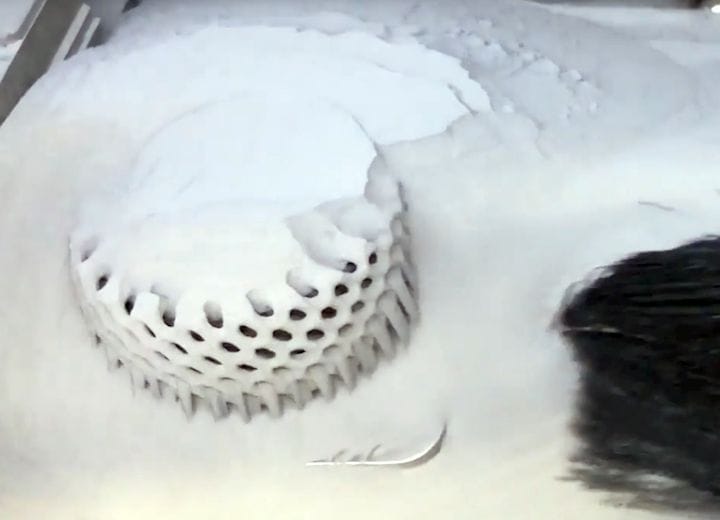![A metal 3D print emerging from Aurora Labs’ new metal 3D printer [Source: Aurora Labs]](https://fabbaloo.com/wp-content/uploads/2020/05/image-asset_img_5eb0a569238ae.jpg)
Aurora Labs announced they’ve made additional progress on their impressive metal 3D printing project.
Their goal is to develop a practical metal 3D printer that is capable of printing at least 1,000kg of metal material in a 24-hour period. The goal is to enable certain industries to very rapidly 3D print large metal parts on demand.
It’s part of their exploration of a new 3D printing business model that could solve a very expensive problem: shipping very heavy metal spare parts to remote locations not served by normal transportation routes, such as mines. Currently these pricey operations shut down for lengthy periods while awaiting delivery of bulky parts from distant locations by aircraft.
If such operations had a capable metal 3D printer onsite, then they’d need only 3D print a part and be back in operation. While the costs of having an expensive metal 3D printer “on standby” at a site would seem large, they could often be a pittance compared to the cost of mine shutdown. There could be a very significant business case to this usage scenario.
But it all hinges on Aurora Labs’ ability to 3D print 1,000kg metal objects within a single day, a feat far beyond all other metal 3D printers, which can take days to complete even smaller objects.
Aurora Labs’ new technology is in development and they’ve been slowly upping the print rate. Most recently they announced they were able to achieve a print rate of around 16kg per day. That is 64X slower than their goal, but it was a step forward.
This time the company announced they were able to tune the machine to 3D print at a rate of 40kg per day, 2.5X faster than their previous milestone:
“This speed increase was achieved following various testing programmes, optimization of the printing process and print parameter development. The Company’s goal at this stage has been to optimise both print speed and quality of the current Alpha unit.
The Company will continue to run a series of tests with the Rapid Manufacturing Technology over the coming weeks and months with the goal of eventually achieving a print rate of 1,000kg/day.”
However, 40kg per day is still 25X less than their goal. How will they achieve this? They explain further:
“The Company will look to link two or more ‘alpha unit’ cores together to form faster units to allow for very high-speed printing as the RMP has been designed to scale through its modular nature. This will also prove out in very practical terms the scalable feature of the technology. In the event that the Company can successfully combine two or more units to work together, the speeds that can be reached will be direct multiples of those currently being achieved.”
Aha! This answers one of my concerns, which was the extreme distance they had to address in order to meet their goal. A 64X improvement is not likely to be achieved through tuning parameters.
No, it seems that they intend on using some form of print parallelism to achieve their 1,000kg/day goal.
Let’s do some arithmetic. First, they say that their next milestone would be 30kg/day, which would appear a reasonable target using machine tuning. If they can stretch that to 50kg per day, they could then achieve 1,000kg per day by merely using an array of only 20 toolheads.
That seems entirely achievable.











Aurora Labs finally leaked the secret to their concept for 3D printing 1000kg of metal per day.